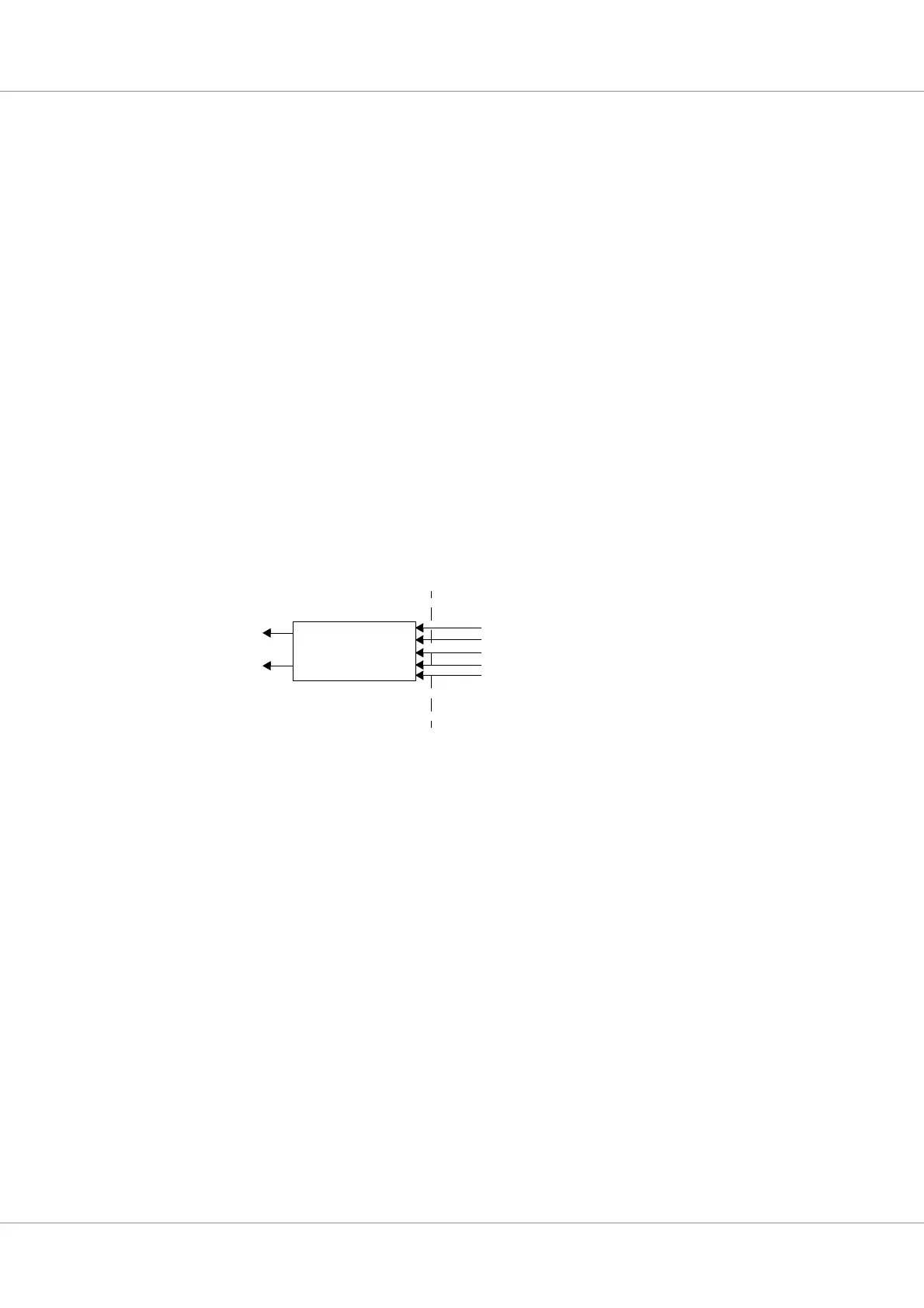GR712RC-UM, Jun 2017, Version 2.9 105 www.cobham.com/gaisler
GR712RC
N-Chars are sent in the run-state when they are available from the transmitter FIFO and there are
credits available. NULLs are sent when no other character transmission is requested or the FSM is in
a state where no other transmissions are allowed.
The credit counter (incoming credits) is automatically increased when FCTs are received and
decreased when N-Chars are transmitted. Received N-Chars are stored to the receiver N-Char FIFO
for further handling by the DMA interface. Received Time-codes are handled by the time-interface.
16.3.2 Transmitter
The state of the FSM, credit counters, requests from the time-interface and requests from the DMA-
interface are used to decide the next character to be transmitted. The type of character and the charac-
ter itself (for N-Chars and Time-codes) to be transmitted are presented to the low-level transmitter
which is located in a separate clock-domain.
This is done because one usually wants to run the SpaceWire link on a different frequency than the
host system clock. The GRSPW has a separate clock input which is used to generate the transmitter
clock. Since the transmitter often runs on high frequency clocks (> 100 MHz) as much logic as possi-
ble has been placed in the system clock domain to minimize power consumption and timing issues.
The transmitter logic in the host clock domain decides what character to send next and sets the proper
control signal and presents any needed character to the low-level transmitter as shown in figure 61.
The transmitter sends the requested characters and generates parity and control bits as needed. If no
requests are made from the host domain, NULLs are sent as long as the transmitter is enabled. Most of
the signal and character levels of the SpaceWire standard is handled in the transmitter. External LVDS
drivers are needed for the data and strobe signals.
A transmission FSM reads N-Chars for transmission from the transmitter FIFO. It is given packet
lengths from the DMA interface and appends EOPs/EEPs and RMAP CRC values if requested. When
it is finished with a packet the DMA interface is notified and a new packet length value is given.
16.3.3 Receiver
The receiver detects connections from other nodes and receives characters as a bit stream on the data
and strobe signals. It is also located in a separate clock domain which runs on a clock generated from
the received data and strobe signals.
The receiver is activated as soon as the link interface leaves the error reset state. Then after a NULL is
received it can start receiving any characters. It detects parity, escape and credit errors which causes
the link interface to enter the error reset state. Disconnections are handled in the link interface part in
the tx clock domain because no receiver clock is available when disconnected.
Received Characters are flagged to the host domain and the data is presented in parallel form. The
interface to the host domain is shown in figure 62. L-Chars are the handled automatically by the host
domain link interface part while all N-Chars are stored in the receiver FIFO for further handling. If
two or more consecutive EOPs/EEPs are received all but the first are discarded.
Transmitter Clock Domain
Host Clock Domain
Transmitter
D
S
Send Time-code
Send FCT
Send NChar
Time-code[7:0]
NChar[8:0]
Figure 61. Schematic of the link interface transmitter.
